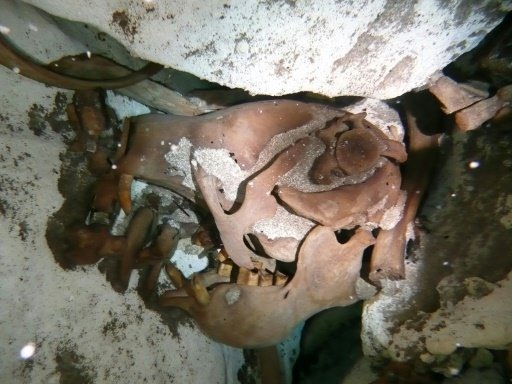 Life & Style
Life & Style

Mexican scientists said Wednesday they have discovered the fossilized remains of a previously unknown species of giant sloth that lived 10,000 years ago and died at the bottom of a sinkhole.
 |
| This undated handout photograph released on August 16 by Mexico’s National Institute of Anthropology (INAH) shows what is supposed to be the skull of a newly discovered species and genus of giant sloth that dates between 10647 and 10305 A.C. — AFP Photo |
MEXICO CITY — Mexican scientists said Wednesday they have discovered the fossilised remains of a previously unknown species of giant sloth that lived 10,000 years ago and died at the bottom of a sinkhole.
The Pleistocene-era remains were found in 2010, but were so deep inside the water-filled sinkhole that researchers were only gradually able to piece together what they were, the National Institute of Anthropology and History (INAH) said in announcing the find.
Scientists have so far hauled up the skull, jawbone, and a mixed bag of vertebrae, ribs claws and other bones, but the rest of the skeleton remains some 50 metres under water, the INAH said.
Researchers are planning to bring up the rest by next year to continue studying the find — including to estimate how big the animal was.
"They’ll be putting the pieces together like a puzzle," INAH spokesman Arturo Mendez said.
The skeleton is nearly complete, leading scientists to believe the sloth "fell into the sinkhole when it was dry or had only a little water at the bottom," the researchers said.
They have named the new species Xibalbaonyx oviceps, and nicknamed it "Pote."
An initial analysis suggests the sloth lived between 10,647 and 10,305 years ago, they said — an era when giant creatures of all kinds roamed the Earth.
Mexico is known for its numerous sinkholes, known here as "cenotes" and often filled with stunning emerald and turquoise waters illuminated by a shaft of light from above.
The area where the sloth was found, amid the pristine beaches of the Yucatan peninsula, is home to some of the most extensive networks of underwater caves on Earth, a magnet for cave divers from around the world. — AFP




